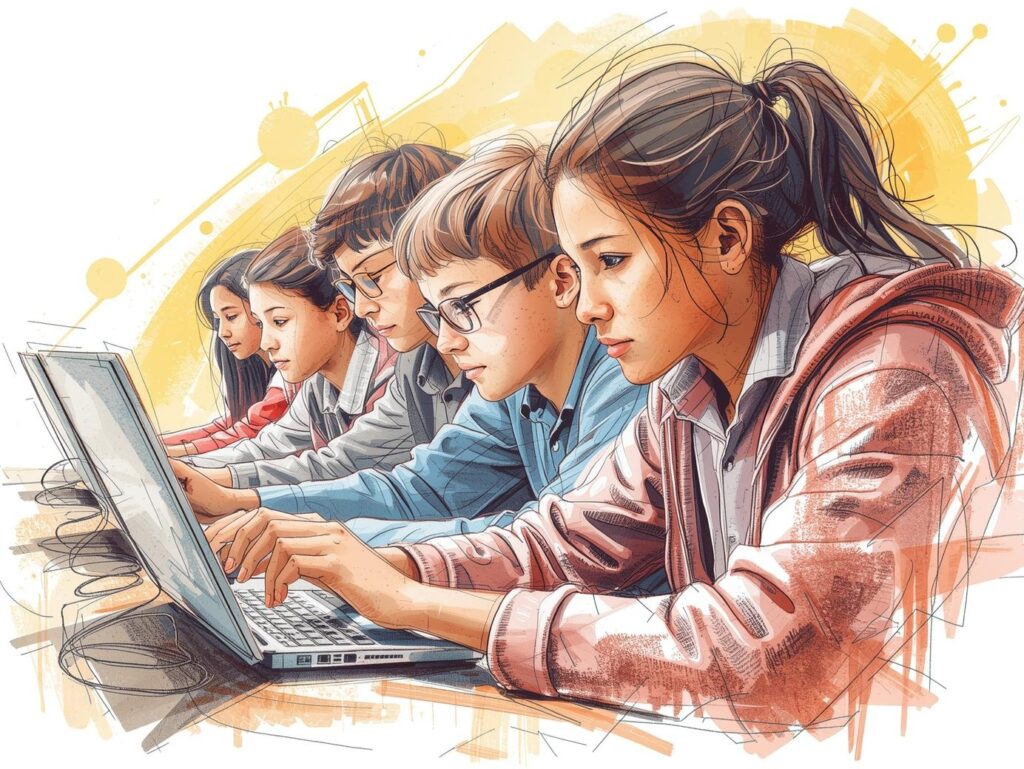Introduction
The 21st century is defined by rapid technological change, digital transformation, and a global economy increasingly driven by innovation. In this context, STEM education (Science, Technology, Engineering, and Mathematics) has become a fundamental pillar for preparing future generations.
For countries like Peru, where youth represent a significant portion of the population, investing in STEM education is not only a matter of competitiveness but also a strategy for equity, empowerment, and social progress. Organizations like CHUYA SONCCO recognize that today’s youth need not only technical skills but also creativity, ethics, and critical thinking to thrive in the digital era.

Why STEM Education Matters
1. Building Skills for the Jobs of Tomorrow
- According to global studies, over 65% of today’s students will work in jobs that do not yet exist.
- Skills such as programming, robotics, artificial intelligence, and data analysis are already shaping the labor market.
- STEM education provides the foundation for these emerging fields.
2. Driving Innovation and Entrepreneurship
- Youth trained in STEM are more likely to develop innovative solutions to local and global challenges.
- From renewable energy startups to digital health platforms, STEM knowledge fosters entrepreneurship and problem-solving.
3. Promoting Gender Equality
- Women remain underrepresented in STEM fields worldwide.
- Promoting STEM education for girls helps close the gender gap and ensures that women contribute equally to technological progress.
4. Strengthening Citizenship in the Digital Age
- STEM is not only about jobs—it also helps young people become responsible digital citizens.
- Understanding technology fosters critical thinking and helps communities confront issues like misinformation, cyber risks, and ethical dilemmas.
Challenges in STEM Education
1. Inequality in Access
- In Peru, many rural and marginalized schools lack access to laboratories, computers, and high-speed internet.
- Without infrastructure, STEM education risks becoming a privilege for urban elites.
2. Teacher Training
- Many teachers have limited exposure to modern STEM methodologies.
- Training educators is essential for quality learning experiences.
3. Curriculum Gaps
- Traditional curricula often emphasize memorization over creativity, experimentation, and critical thinking.
- STEM requires a shift toward hands-on, project-based learning.
4. Cultural and Gender Barriers
- Social norms can discourage girls from pursuing careers in science and technology.
- Inclusive strategies must challenge stereotypes and provide role models for diverse youth.
Lessons from Global Experiences
Finland
- Emphasizes interdisciplinary, project-based learning in STEM.
- Students learn coding and problem-solving from an early age.
South Korea
- National policies encourage STEM careers to support economic competitiveness.
- Heavy investment in digital classrooms and robotics.
United States
- Initiatives like STEM for All focus on democratizing access, especially in disadvantaged communities.
- Partnerships between schools, tech companies, and nonprofits expand opportunities.
Latin America
- Countries like Chile and Mexico are implementing national STEM strategies, including robotics competitions and innovation labs for schools.
The Role of CHUYA SONCCO
CHUYA SONCCO envisions STEM education as a pathway to equity, empowerment, and innovation. Its approach includes:
- STEM Clubs for Rural Schools: Providing access to robotics kits, coding workshops, and science labs in underserved communities.
- Digital Literacy for Girls: Special programs encouraging female participation in STEM fields through mentorship and scholarships.
- Capacity Building for Teachers: Training educators in modern pedagogical methods and digital tools.
- Youth Innovation Challenges: Competitions that encourage young people to design solutions for local problems (water, health, environment).
- Partnerships with Universities and Tech Companies: To scale projects, create internships, and build bridges between youth and the digital economy.
Inspiring Youth for the Future
The digital era requires not just technical expertise, but also:
- Creativity to design innovative solutions.
- Ethics to ensure technology serves humanity.
- Resilience to adapt to rapid change.
- Collaboration to work across cultures and disciplines.
By inspiring youth through STEM, CHUYA SONCCO seeks to empower them to shape their own futures and contribute to building a more inclusive, sustainable, and innovative society.
Conclusion
STEM education is more than a school subject—it is the foundation of the future. In rural Peru and beyond, inspiring young people through science, technology, engineering, and mathematics is a powerful way to reduce inequalities, drive innovation, and create opportunities.
With the right investments, partnerships, and inclusive strategies, STEM can transform not only the lives of young people but also the social, cultural, and economic fabric of entire nations.
For CHUYA SONCCO, the mission is clear: to inspire, empower, and prepare today’s youth to be the leaders, innovators, and change-makers of tomorrow.





